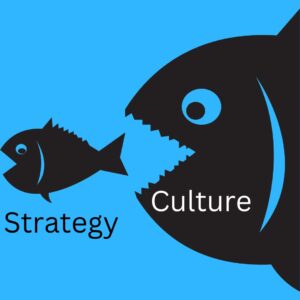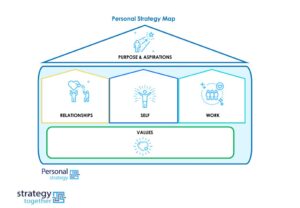“Strategic thinking is an essential component of leadership – and yet for many leaders, it can be impossible to find time for.” Dorie Clark
Almost every leader wants to make more time for strategic thinking.
In one survey of 10,000 leaders, 97% said that being strategic was the leadership behaviour most important to their organisation’s success.
However, another study identified that 96% of leaders lacked time for strategic thinking.***
We are increasingly being asked to do more, and it’s easy to let strategy slip. But more than ever, we need to be making good strategic choices and engaging in strategic thinking – putting the smallest decisions, transactions or operational tasks into a broader, purposeful and connected context.
Two key barriers that we need to address are:
1) We value ‘busy’ and equate it with ‘importance’, incentivising working long hours; this frame dominates our culture. Being tethered to our desks/computer, consumed by relentless meetings, and buried in emails requiring a fast reaction and with an operational focus is not a great recipe for innovative, strategic thinking.
2) We are not intentional about creating the space, structure or systems to elevate our thinking and prioritise what’s important over what’s urgent.
When we prioritise the myriad of transactional tasks in our day over the strategically significant, there is never enough space for the really important things that are impactful in the long term. You have to put the strategic ‘rocks’ into the ‘jar of life’ first, then allow the smaller urgent ‘sand’ and ‘pebbles’ to fit in the gaps between the rocks, otherwise if you start with the ‘sand’ and the ‘pebbles’, the ‘rocks’ just don’t fit.
This requires us to stop valuing short term activity over long term outcomes.
Rigorously explore how you are spending your time and energy and consider what you could stop, defer, combine, delegate or adapt. Being aware of the reasons you struggle to find time for strategic thinking is the first step to overcoming them.
It also requires us to intentionally create the space and structure to curate a strategic mindset, recognise strategic contribution and facilitate strategic conversations:
– Set time for strategic thinking
– Mentor teams to surface strategic issues
– Embed strategic thinking into development programmes
– Create a culture where everyone is comfortable having strategic conversations and asking strategic questions
– Promote the sharing of broader business information across boundaries
– Communicate the strategy relentlessly
Find out more about our strategic approach to leadership by getting in touch.




